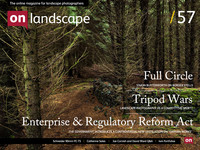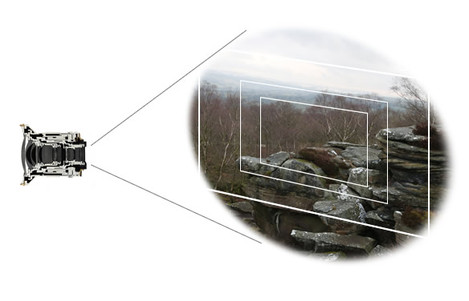Calculating Equivalent Focal Lengths and Apertures

Tim Parkin
Amateur Photographer who plays with big cameras and film when in between digital photographs.
We've done a fair bit of camera comparing in On Landscape and one of the things that causes a lot of confusion is how to work out equivalent focal lengths, depth of field, apertures and exposure is the part that sensor size plays in the equation. We've talked about them a little bit in previous articles but thought it would be good to cover things in little more detail. This should also help any of you that use crop sensor cameras such as APSC and four-thirds.
Focal Length
The most important comparison is that of focal length. This is the one that most people get quite quickly and know that to get the equivalent full frame focal length they need to multiply by the crop factor.
e.g. a 30mm equivalent on a 1.6x APSC sensor camera is approx 30mm x 1.6 = 50mm
So I won’t dwell too much but here’s a diagram that might help understand why and this understanding can be useful elsewhere.
As you can see, when you use a crop factor sensor you are in effect zooming in on a section of the picture so in order to have the same image we need to use a wider lens. i.e. the focal length has to be wider by the crop factor (or 1.6x wider for APSC)
Aperture & Depth of Field
But the big challenge is to work out how the crop factor affects depth of field with the same lens and aperture.
We could use the depth of field equations to work this out (and we have) but it doesn't help explain anything. Instead we can understand that depth of field is to do with the size of the blur, if it's below a certain size then we're within the depth of field.
Now when you use a longer lens, you are effectively cropping into the scene which increases the blur circle. Hence you need to close the aperture further to compensate.
When you use a smaller sensor, you need to compensate by using a wider lens to get the same field of view. A wider lens makes the blur circle smaller and hence you can get away with a larger aperture.
If you run the mathematics you get the result that depth of field is constant for a fixed aperture diameter and as the aperture gets physically smaller when lenses get wider (aperture is focal length divided by aperture size) then you can need to open up the aperture to get the same physical size.
Anyway - the result come out that to get the same depth of field the required aperture should be divided by the crop factor. For for a 1.6x crop f/8 becomes 8/1.6 = f/5
Crop Factor
But what is the crop factor? With an APSC sensor the crop factor is simple as we have a 3:2 ratio sensor in both cases but what happens when one of cameras is a different ratio?
The accepted way of working this out is to use the diagonal. But this is only an approximation. For the accurate way of working out the crop factor, we need to decide on which sensor ratio we're going to use.
For example, if we're looking at a 4:3 sensor and trying to work out what the crop factor is, we need to know whether we're going to crop the 4:3 sensor to 3:2 ratio or going to keep 4:3.
Let's work out both of them.
Crop to 3:2
If we crop to 3:2 then we'll be keeping the long edge of the four-thirds sensor but cropping the short edge. This means we can compare the long edges.
A four thirds sensor is 17.3mm by 13mm
A full frame sensor is 36mm by 24mm.
So the crop factor is the ratio of the long edges which is 36/17.3 = 2.08x
Crop to 4:3
If we were to keep the 4:3 ratio then we would have to crop the full frame sensor so that the only edge we can compare are the short edges.
So the crop factor is the ratio of these short edges which is 24/13 = 1.85x
I've written an online calculator to help you work these ratios out and you can visit it here.


